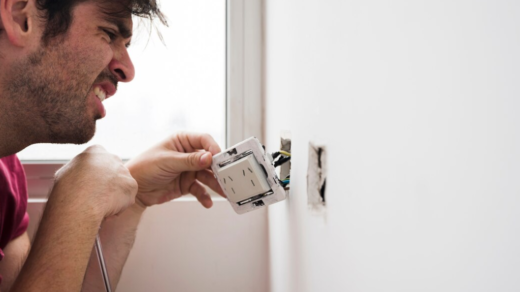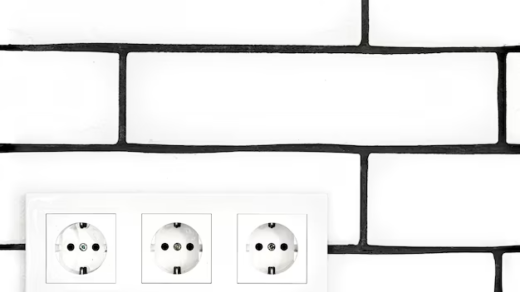Table of Contents
- Key Electrical Terminologies;
- The Role of Electrical Components;
- The Science Behind Electricity;
- Comparative Analysis of Electrical Units;
- Video Guide;
- Conclusion.
Electricity is a vast and intricate field. To navigate conversations with seasoned electricians or simply understand the basics, one needs familiarity with the fundamental terms. This guide elucidates these terms, ensuring readers are equipped with the necessary knowledge.
Key Electrical Terminologies
Grasping electrical concepts necessitates foundational terminology. When delving into the electrical domain, terms like AC Current, Ampere, and Capacitance often surface. This segment unravels these terms, furnishing readers with a concise understanding.
- AC Current: Electric current altering direction periodically;
- Ammeter: Device measuring current by being connected in sequence;
- Ampacity: A device’s maximum current capacity;
- Ampere-Hour: Battery capacity metric involving time and current;
- Ampere: Current intensity unit;
- Apparent Power: Calculated in volt-amperes, it links RMS voltage and RMS current;
- Armature: A motor’s moving component, interacting with magnetic fields;
- Capacitance: Electrical charge storage capacity;
- Capacitor: Stores electric charge, aiding in voltage regulation;
- Circuit: Closed route for electron movement;
- Circuit Breaker: Auto-halting mechanism for current, guarding circuits;
- Conductor: Materials, like copper, channeling electric current;
- Corona: Electric discharge surrounding a charged conductor;
- Current: Electric charge movement through a conductor;
- Cycle: A current wave’s progression from zero to its peaks;
- Demand: Average power over a set span;
- Dielectric Strength: Insulation’s max electric field resistance;
- Diode: Directs current flow in one direction;
- Direct Current: Steady unidirectional current;
- Electrolyte: Substance enabling current through ion dissociation;
- Electron: Atom-orbiting particle with electric charge;
- Farad: Capacitance measurement unit;
- Feeder Pillar: Equipment-storing cabinet, regulating electricity distribution;
- Frequency: Cycles per second, quantified in Hertz;
- Fuse: Protects against excessive current;
- Generator: Converts mechanical to electrical energy;
- Ground: Common current return path;
- Impedance: AC circuit’s opposition to current;
- Inductance: Quantity gauged in henry (H);
- Insulator: Restricts electric current flow;
- Inverter: Converts directly to alternating current;
- Kilowatt-hour: Represents energy consumption;
- Ohm: Current resistance unit;
- Parallel Circuit: Offers multiple paths for electric flow;
- Power: Rate of electrical energy transfer;
- Rectifier: Converts AC to DC;
- Resistance: Electric current opposition;
- Rotor: Revolving segment of an electric apparatus;
- Semiconductor: Midway conductor between metals and insulators;
- Series Circuit: Singular path for current flow;
- Short Circuit: Fault due to inadequate insulation;
- Transistor: Tri-connection device for amplification;
- VARS: Imaginary or reactive power unit;
- Volt: Potential difference unit pushing current;
- Voltage: Electric pressure initiating electron flow;
- Watt: Power measurement unit;
- Waveform: Electric cycles’ graphic portrayal.
The Role of Electrical Components
Beyond the jargon, it’s paramount to recognize the critical components shaping the electrical landscape. From Diodes that allow current flow in a single direction to Capacitors that control voltage spikes, each component plays a pivotal role in ensuring the seamless operation of electrical systems.
The Science Behind Electricity
Delving deeper, the very essence of electricity is governed by the intricate dance of electrons. The Electron Theory postulates the exchange of these free electrons amongst conductor atoms, offering insights into the current flow direction. By understanding these foundational theories, one can appreciate the complexities and marvels of the electrical world.
Comparative Analysis of Electrical Units
| Term | Definition | Example |
|---|---|---|
| AC Current | Current that alters direction periodically | Home appliances use AC Current. |
| Ampere (A) | Unit determining electric current intensity | A light bulb might require 0.5 A. |
| Capacitance | Electrical charge storage capability of a body | A capacitor with 10 farads can store more charge than one with 5 farads. |
| Volt (V) | Measure of electrical force | A typical battery might offer 9 V. |
| Watt (W) | Unit of power, illustrating electric current’s strength | A 60 W bulb consumes more power than a 40 W bulb. |
Understanding the relationship and differences between these units aids in deciphering electrical schematics, system designs, and everyday applications. Whether you’re engaging in a DIY project or merely replacing a bulb, this foundational knowledge can be invaluable.
Conclusion
Electricity is a profound and multifaceted field, encompassing a multitude of intricate concepts and terminology. From a basic introduction to the core ideas to a deeper understanding of individual components and scientific theories, we’ve endeavored to elucidate and bring this phenomenon closer to the reader’s everyday life. Comparative analysis of units provides clearer insights into how these concepts relate to each other and how they’re applied in real-world scenarios. We hope that, through this guide, you feel more confident and informed in the realm of electricity. Whether you’re a professional in the field or merely fueled by curiosity, a strong foundation always remains the key to comprehension.








